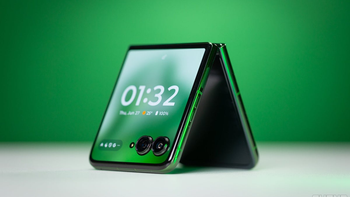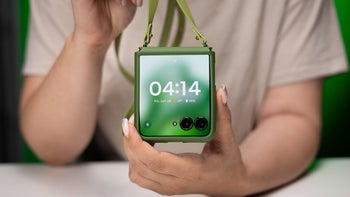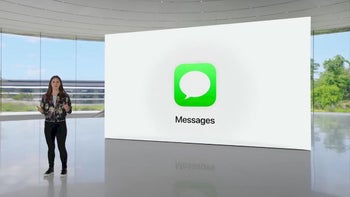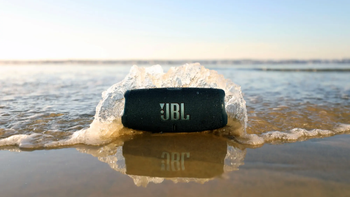LG G Flex 2 vs iPhone 6 Plus: first look
LG made headlines during "day zero" of CES 2015 with the announcement of its new curvy, flexy handset. That's the LG G Flex 2, as you surely know if you've been following our news coverage – a phone that's here to succeed the one-year-old LG G Flex and to convince us that there's room for curved smartphones on a market dominated by its flatter counterparts. Is that the case? Well, perhaps a quick hands-on comparison between the LG G Flex 2 and a smartphone you might have heard about, namely the iPhone 6 Plus, could give us a hint or two. Here's how the two stack up against each other.
Design
As usual, we'll start with a few words on how the phones look and feel in the hand; and it's like these two have been built in different galaxies. Okay, maybe their design languages are not that distanced, but seriously, there's quite a lot that sets the two devices apart. Needless to say, the LG G Flex 2 is quite the attention grabber with its elegantly curved shape. It is comfortable to hold, we must admit, and despite its plastic build, the phone feels like something you wouldn't mind owning. Still, the metal-made iPhone 6 Plus is pretty hard to beat in terms of design as its slender, aluminum body has "premium" written all over it.
Size-wise, the LG G Flex 2 has the upper hand as it is both shorter and narrower than the iPhone 6 Plus. LG's handset is also lighter at 152 grams vs 172 grams for the iPhone 6 Plus. Yet due to their overall proportions, we don't feel like any of the two handsets would fit comfortably in the pocket of your jeans.
If you flip the LG G Flex 2 around, you'll notice that its power and volume keys are placed on its back, below the camera. Anyone who has their brain wired to use side-placed power and volume buttons might find this arrangement odd at first, but it is just something you get used to eventually. In contrast, the iPhone 6 Plus takes a traditional approach, having its power and volume keys placed on the sides.
While we're at it, we must highlight the G Flex 2's unique "self-healing" back plate, which recovers from light scuffs in a matter of seconds. We're not making this up. On the other hand, once a dent or scratch lands on an unprotected iPhone 6 Plus, it'll be there for life.
Display
A 5.5-inch display with resolution of 1080 by 1920 pixels – that's what is found on the front sides of the two smartphones. Both the LG G Flex2 and the iPhone 6 Plus produce crisp, detailed visuals with bright, beautiful colors. LG's handset, however, features a flexible P-OLED display, while Apple's phablet relies on a traditionally flat, IPS LCD panel. Due to its curved nature, and because it is protected by a chemically-treated piece of Gorilla Glass 3, the Flex 2's screen should be less prone to damage compared to the screens on other smartphones, LG boasts.
Interface
If the LG G Flex2 and the iPhone 6 Plus were not different enough already, the two smartphones run on totally different operating systems – Android 5.0 and iOS 8.1, respectively. We must note that in the former's case, we find LG's custom Android UI layered on top of Lollipop, and it appears to be nearly identical to the experience we know from the LG G3, with its perks like the plethora of customization features and the intelligent on-screen keyboard. The iPhone 6 Plus, in the meantime, is your typical iPhone – not quite as feature-pack out of the box, but fast, intuitive, reliable, and with access to a broad array of quality apps, including third-party widgets.
Processor and memory
We probably won't be wrong if we say that the LG G Flex 2 is the most powerful Android phone announced so far. Under its hood ticks an octa-core Snapdragon 810 SoC with 64-bit architecture and 2.0GHz maximum clock rate. The silicon is backed by 2 or 3 gigs of DDR4 RAM, which is faster and less power-hungry than the DDR3 modules used widely across today's smartphones. Therefore, it is safe to assume that the LG G Flex 2 will be one mighty snappy smartphone. Will it be faster than an iPhone 6 Plus, which boasts an Apple-designed Apple A8 SoC, with a dual-core, 64-bit, 1.4GHz CPU? Well, it might be, if LG manages to polish the G Flex 2's software to a lag-free perfection.
In terms of storage, you get either 16 or 32 gigabytes build into the LG G Flex 2 (for the models with 2 and 3 GB of RAM respectively). Since many a smartphone user would find this insufficient, LG has provided a microSD card slot for storage expansion. You won't find one on the iPhone 6 Plus, however. It packs 16, 64, or 128GB built in, and that's that.
Camera
Knowing how potent the LG G3's camera is, our hopes are set high for the 13MP shooter on the LG G Flex 2. Its arsenal of stand-out features includes optical image stabilization, a dual-tone LED flash, and a laser-assisted auto-focusing system. But the iPhone 6 Plus could be a worthy rival as its 8MP camera should not be underestimated. Phase-detection auto-focus allows it to lock on its subjects in an instant, and its optical image stabilization comes in handy when shooting in low-light. While only a thorough shoot-out would determine which of the two handsets has the better camera, our intuition tells us that they'll be at the same level when it comes to taking photos.
Expectations
The LG G Flex 2 is a big, powerful, top-of-the-line smartphone with plenty of bang to steal attention with. And surely, there will be a mass of folks eager to check it out – tech enthusiasts, user seeking a device to stand out with, for example. But at this time, we can't see it outgrowing the iPhone 6 Plus in popularity. The Flex 2 is too much of a niche product to do that, it seems, while the iPhone 6 Plus, despite its larger-than-average size, would probably appeal more to the average smartphone user. Is the G Flex 2 better than the iPhone 6 Plus? Well, it sure has a more pronounced "wow" factor to it. Also, we do dig its perks, such as the self-healing surface and the damage-resisting, flexible screen. But at this time, we can't say that the iPhone 6 Plus is any less attractive of a smartphone. What do you, guys, think? Let us know down in the comments!













Things that are NOT allowed: